Madanbashi (Madan Bridge)
Historic sitesHistory
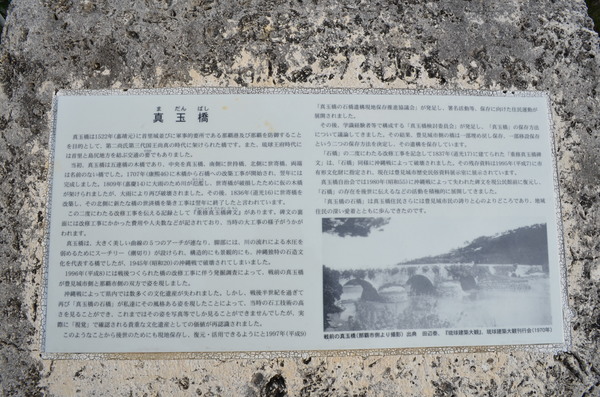

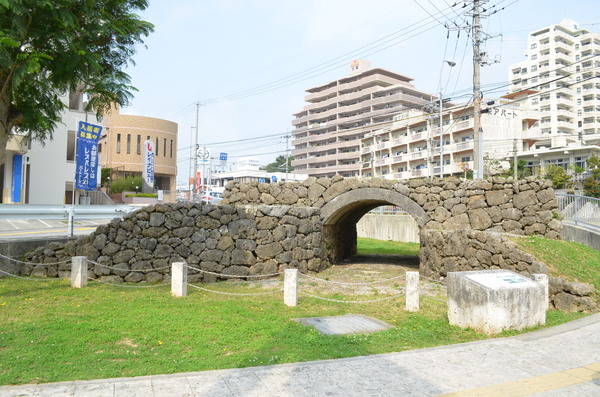
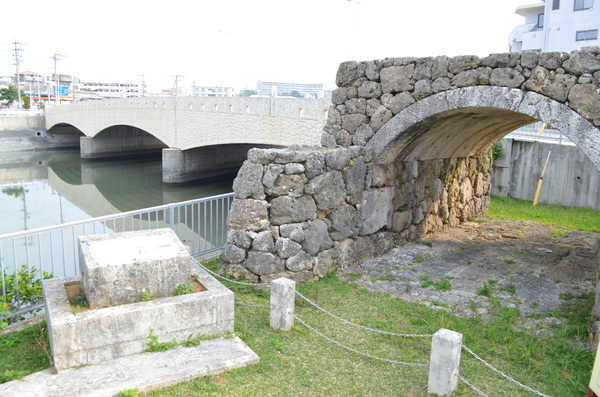
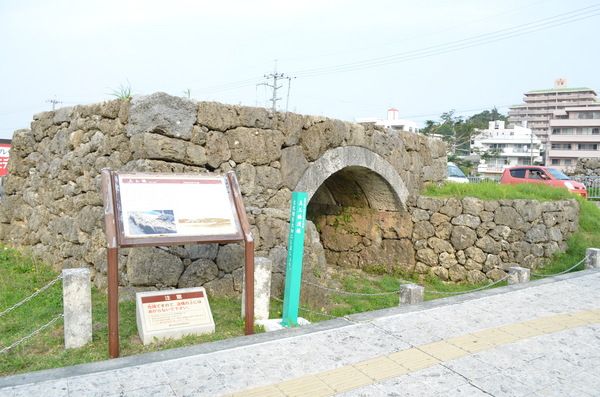
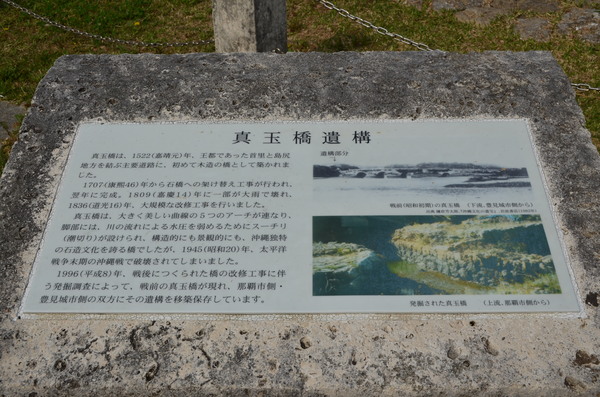
The center of the wooden bridge built as a main point for traffic connecting Shuri with the Shimajiri district is called Madanbashi (Madan Bridge). The bridge has been destroyed multiple times by floods and the Battle of Okinawa.
Basic information
- Address
- 900-0024 4-14 Kohagura Naha Okinawa The remnants of the relocated stone bridge in the triangular field.
- Business hours
- Nothing in particular.
- Close day
- Nothing in particular.
- Charge
- Free
- Parking
- None
- Access information
- Take the Prefectural Route 507 from Naha heading towards Yonabaru, on the right of the Madanbashi (Kita) intersection.
Additional Information
- Academic information
- Madanbashi (Madan Bridge) was constructed for defending Shuri-jo Castle, an important military site, Naha Port and Naha City during the reign of King Sho Shin, the third of the line of the Second Shō Dynasty. The bridge was the main point for traffic connecting Shuri with the Shimajiri district during the Ryukyu Kingdom era. It was made of wood at that time with five arches, Madanbashi in the middle, Yomochigashi in the south, Yoyosebashi in the north, and both end arches not given names. Rebuilding the wooden into a stone bridge started in 1707 and was completed the following year. In 1809, due to flooding from heavy rains, the bridge broke and was repaired temporarily with a wooden bridge, but due to heavy rains broke again. After that, in 1836, a new renovated bridge was built on the north side and was completed the following year. A recording of this renovation and construction that occurred twice is inscribed on the "Jushu Madanbashi Hibun" (Heavy Construction Madan Bridge Inscription). On the back of the inscription, the expense of the construction and number of people involved is recorded, and we can imagine what the big construction of those days must have been like. The stone bridge had both aesthetics and functionality in a structure: an elegant arched curve combined with water draining technology to protect the bridge from water current. It was a bridge on which the stone culture unique to Okinawa was reflected. In 1945, during the Battle of Okinawa, the bridge was destroyed.
In 1996, excavations associated with the renovation of the bridge, which was built after the war, both the Naha side and the Tomigusuku side of the pre-war Madanbashi bridge were found. Many cultural heritages of the Prefecture have been lost in the Battle of Okinawa. However, the "Stone Bridge Madanbashi" again came out in style over half a century after the war, you can see the height of the technological masonry of that time, which up until then, you could only see the bridge in photographs, but now you can "visually" confirm the value of a precious cultural heritage, and its value has been recognized again. To save the location and the bridge for future generations, restoration and continuing use, in 1997, the "Madanbashi Bridge Stone Bridge remains Preservation Promotion Council" was launched, to hold autographing campaigns, and residential campaigns in order to preserve the bridge.
Then the "Madanbashi Review Committee" was established, which consists of academic experts to discuss how to save "Madanbashi Bridge." The results of their discussion led to the decision to bury part of the Tomigusuku side of the bridge again to preserve it, and to move another part of the bridge elsewhere to preserve it, using two different methods that has saved the ruins. The "Stone Bridge" inscription, recording the renovating construction that was carried out twice and commemorated in 1837 as the "Jushu Madanbashi Hibun" (Heavy Construction Madan Bridge Inscription), was also lost in the Battle of Okinawa along with the bridge. The remaining documented materials were designated as a specified tangible cultural property of the city in 1995, and presently is on display at the Tomigusuku History and Folklore Exhibition Hall.
The Madanbashi community council in 1980 has been actively developing activities such as to convey posterity of the existence of a "Stone Bridge", and to restore the inscription that was lost in the Battle of Okinawa in front of the current community center. - Quote
- Quoted from the guide plate.
